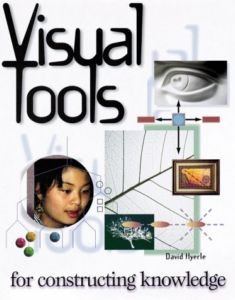Three types of visual tools can help K-12 students and teachers construct knowledge, organize information, and communicate their learning with others: brainstorming webs, task-specific organizers, and thinking-process maps. This book explains WHAT visual tools are, WHY we should use them, and HOW to get the most out of these tools. David Hyerle provides sample lessons, assessments, and "portraits" of visual tools in action. He emphasizes interdisciplinary and collaborative uses of such graphic organizers, as well as technological approaches that facilitate the creation of visual tools and construction of learning projects. He discusses the use of visual tools such as "Thinking Maps" within the framework of constructivism as a paradigm for learning; cooperative learning; and the integration of teaching, learning, and assessing using visual tools. The book discusses "concept mapping" and the "feedback loops" of systems thinking, and shows how schools can foster lifelong learning among students and teachers.
In Collection
#44
Read It:
Yes
#44
Read It:
Yes
|
|
||||||||||||||||||
